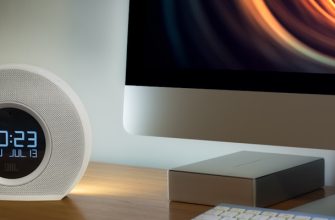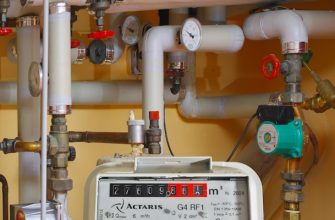- Understanding the Role of Smart Home Devices in Enhancing Air Quality
- The Intersection of Smart Technology and Indoor Air Pollution
- Innovative Solutions: How Smart Homes Combat Air Quality Issues
- The Future of Living: Smart Technologies for Cleaner Air
- Integrating IoT and Air Quality Monitoring in Smart Homes
- Assessing the Benefits and Challenges of Smart Air Quality Management
Understanding the Role of Smart Home Devices in Enhancing Air Quality
Smart home devices play a pivotal role in enhancing air quality within residential spaces. These advanced technologies are designed to monitor and improve the air people breathe, providing a healthier living environment. By integrating various smart systems, homeowners can gain real-time insights into air quality levels, enabling them to take proactive measures to ensure optimal conditions.
- Air Quality Monitors: Smart air quality monitors can detect harmful pollutants such as particulate matter, volatile organic compounds (VOCs), and carbon dioxide levels. By providing detailed information, these devices allow users to understand their indoor air environment better.
- Smart Air Purifiers: Equipped with advanced filtration systems, smart air purifiers can significantly reduce allergens, dust, and other contaminants. Many models can be controlled remotely, allowing adjustments based on real-time air quality readings.
- Smart Thermostats: These devices optimize heating and cooling systems, ensuring proper ventilation. By maintaining ideal temperature and humidity levels, smart thermostats contribute to better indoor air quality.
- Smart Ventilation Systems: Automated ventilation solutions can enhance air circulation and introduce fresh air into the home. These systems can be programmed to operate during low pollution times, improving overall air quality.
Integrating these smart technologies not only enhances air quality but also promotes energy efficiency. In a world increasingly aware of environmental health, utilizing smart home solutions represents a proactive approach to maintaining a clean and safe indoor atmosphere. The combination of real-time monitoring and automated systems ensures that homes remain healthy, comfortable, and energy-efficient.
The Intersection of Smart Technology and Indoor Air Pollution
The convergence of smart technology and indoor air pollution presents significant opportunities for enhancing home environments. With the rise of smart home systems, the ability to monitor and improve air quality has become increasingly accessible. Smart devices equipped with advanced sensors can detect pollutants and allergens, providing real-time data to homeowners.
These intelligent systems enable users to take proactive measures against indoor air quality issues. For instance, automated ventilation systems can adjust airflow based on detected air quality levels, ensuring optimal conditions. Moreover, smart air purifiers can be programmed to activate when harmful particles are present, effectively reducing the concentration of indoor pollutants.
- Real-time Monitoring: Smart technology allows continuous tracking of air quality metrics, including levels of particulate matter, volatile organic compounds (VOCs), and humidity.
- Automated Adjustments: Smart thermostats and HVAC systems can modify settings automatically to enhance air circulation and filtration based on current conditions.
- Data Analysis: Advanced analytics provide insights into air quality trends, helping homeowners identify patterns and make informed decisions about their indoor environment.
- Integration: Smart home ecosystems can integrate multiple devices, creating a cohesive approach to improving air quality and overall home health.
The intersection of smart technology with air quality management not only addresses immediate health concerns but also contributes to long-term well-being. As awareness of indoor air pollution grows, the role of smart technology in creating healthier living spaces will continue to expand, paving the way for smarter, cleaner homes.
Innovative Solutions: How Smart Homes Combat Air Quality Issues
In the quest for improved air quality, innovative solutions offered by smart home technologies are proving to be highly effective. Smart homes utilize advanced sensors and automated systems to monitor and manage indoor air conditions, ensuring a healthier living environment. These systems can detect pollutants, humidity levels, and temperature fluctuations, allowing for real-time adjustments to maintain optimal air quality.
One of the primary components of smart home solutions is the integration of smart air purifiers. These devices are equipped with HEPA filters and smart sensors that can automatically adjust their operation based on the detected air quality. When pollutants exceed a certain threshold, the air purifier activates, filtering out harmful particles and providing cleaner air.
- Smart Thermostats: These devices not only regulate temperature but also monitor humidity levels, which can significantly impact air quality. By maintaining appropriate humidity, they help prevent mold growth and dust mites.
- Smart Ventilation Systems: These systems optimize airflow within the home, ensuring that fresh air is circulated while stale air is exhausted. This continual exchange helps to dilute indoor pollutants.
- Indoor Air Quality Monitors: These sensors provide real-time data on various air quality parameters, such as VOCs (volatile organic compounds), CO2 levels, and particulate matter. Homeowners can receive alerts and take action when air quality deteriorates.
Moreover, integration with smart home ecosystems allows for seamless control of these devices through smartphones or voice-activated assistants. This connectivity enhances the convenience and effectiveness of managing air quality, making it easier for residents to ensure their home environment remains safe and healthy.
As awareness of air quality issues grows, the demand for smart home technologies designed to combat these challenges is increasing. Investing in smart home solutions not only improves air quality but also enhances overall well-being, creating a more comfortable and healthier living space for families.
The Future of Living: Smart Technologies for Cleaner Air
The future of living is increasingly intertwined with the integration of smart technologies, especially in the realm of air quality. As urbanization continues to rise, the demand for cleaner air becomes paramount. Smart home systems are evolving to address these pressing concerns, offering innovative solutions that enhance indoor air quality.
Smart sensors are at the forefront of this technological revolution. These devices monitor air quality in real-time, detecting pollutants such as volatile organic compounds (VOCs), carbon dioxide (CO2), and particulate matter. By providing immediate feedback to homeowners, these sensors empower individuals to take proactive measures to improve their environments.
- Automated Air Purification: Smart air purifiers are designed to work in harmony with air quality sensors. They automatically adjust their filtration settings based on detected pollutant levels, ensuring optimal air cleanliness.
- Smart Ventilation Systems: These systems intelligently regulate airflow to enhance air exchange without compromising energy efficiency. By optimizing ventilation, they help reduce indoor air contaminants.
- Integration with Smart Home Devices: Many smart home platforms allow for seamless integration of air quality management devices. Homeowners can control air quality systems through voice commands or mobile applications, enhancing convenience and accessibility.
Moreover, the incorporation of artificial intelligence (AI) in smart technologies further elevates the potential for cleaner air. AI algorithms analyze data from various sensors, predicting pollution trends and suggesting personalized strategies for maintaining optimal air quality. This level of intelligent automation not only enhances comfort but also promotes health and well-being.
As smart technologies continue to advance, the prospects for improving air quality through smart homes become increasingly promising. The convergence of user-friendly interfaces, real-time monitoring, and automated solutions signifies a transformative shift in how individuals approach air purity. Investing in smart home systems that prioritize air quality can lead to healthier living environments, ultimately contributing to a better quality of life.
Integrating IoT and Air Quality Monitoring in Smart Homes
Integrating IoT (Internet of Things) with air quality monitoring systems in smart homes offers a revolutionary approach to enhancing indoor environments. Smart home technologies are designed to create a comfortable and healthy living space, and air quality is a crucial factor in achieving this goal. By utilizing advanced sensors and IoT devices, homeowners can continuously monitor and manage air quality levels, ensuring optimal conditions.
IoT-enabled air quality monitors collect real-time data on various pollutants, such as particulate matter, carbon dioxide, and volatile organic compounds. This information is transmitted to a centralized smart home system, which analyzes the data to provide actionable insights. Through seamless integration, homeowners can receive alerts about poor air quality and take necessary measures to improve it.
- Automated ventilation systems can be activated to enhance airflow when air quality deteriorates.
- Smart air purifiers can be programmed to operate during specific times or when pollutants reach critical levels.
- Integration with heating and cooling systems allows for the adjustment of temperature and humidity, further improving air quality.
The benefits of incorporating IoT and air quality monitoring in smart homes extend beyond mere convenience. Improved indoor air quality leads to better health outcomes, reducing the risk of respiratory issues and allergies. Additionally, smart technologies can help in energy savings by optimizing HVAC (heating, ventilation, and air conditioning) usage based on real-time air quality data.
As the demand for smart home solutions continues to rise, the integration of IoT with air quality monitoring is expected to play a pivotal role in the future of residential living. Homeowners can look forward to a smarter, healthier living environment where air quality is continuously monitored and maintained with minimal effort. This evolution in smart home technology not only enhances comfort but also contributes to overall well-being.
Assessing the Benefits and Challenges of Smart Air Quality Management
Smart air quality management systems provide significant advantages in enhancing indoor environments. These technologies offer real-time monitoring of air pollutants, enabling users to make informed decisions about their living spaces. The integration of smart sensors and IoT devices allows for continuous assessment of air quality, ensuring a healthier atmosphere.
- Improved Health: Smart air quality management contributes to better respiratory health by identifying harmful pollutants and allergens, thus reducing exposure.
- Energy Efficiency: Many smart systems optimize ventilation based on air quality, leading to reduced energy consumption and lower utility bills.
- Data-Driven Insights: Users receive valuable insights through data analytics, helping them understand air quality patterns and make necessary adjustments.
- Remote Monitoring: Advanced technologies allow for remote access to air quality data via smartphones, providing flexibility and convenience.
Despite these benefits, challenges exist in the implementation of smart air quality management systems. Initial costs can be high, and the complexity of some systems may deter users. Additionally, reliance on technology necessitates regular updates and maintenance to ensure optimal performance.
- Initial Investment: The upfront costs associated with smart air quality systems can be a barrier for some households.
- Technical Challenges: Users may face difficulties in setting up and maintaining these advanced technologies, which could lead to frustration.
- Data Privacy Concerns: The collection of air quality data raises questions about privacy and data security.
- Dependence on Connectivity: Many smart air quality devices rely on internet connectivity, which can be a limitation in areas with unreliable service.
In conclusion, understanding both the benefits and challenges of smart air quality management is crucial for optimizing indoor air quality. By leveraging advanced technologies, users can significantly enhance their living environments while being mindful of the potential obstacles.








